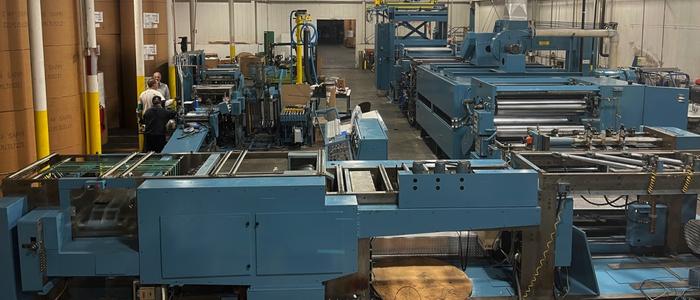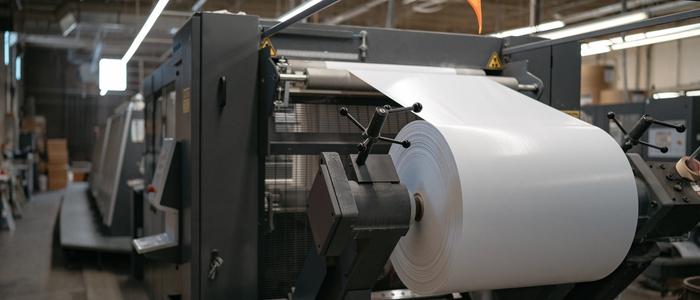Offset Print Q&A
 BR Printers is proud to have a team of print experts onboard. Their insights are a great resource for businesses and individuals involved with the print industry in any way. In this piece, the President of NGS, Philip Kemppainen, dives into optimal printing jobs, quality levels, and the future of offset printing.
BR Printers is proud to have a team of print experts onboard. Their insights are a great resource for businesses and individuals involved with the print industry in any way. In this piece, the President of NGS, Philip Kemppainen, dives into optimal printing jobs, quality levels, and the future of offset printing.
The Basics
Offset printing involves transferring an image from a plate (usually aluminum) to a rubber “blanket” and from there onto the printing surface. Offset printing is so called because the transfer of the inked image from the plate to the blanket is known as “offsetting”.
Q: What is the optimal printing job for offset printing?
A: Web Offset printing is typically most efficient in the 10,000 and above quantity range, however some of the new presses are brining this quantity down with the new quick/ automatic makeready features and closed loop systems that are now available. For sheetfed offset printing the quantity and quality of the product dictate what is best. Digital presses have become much better with delivering higher quality projects, however traditional sheetfed presses consistently produce high level results and they often offer coating options not available with digital assets. Typically you will achieve a lower cost running high quantities on Web presses, and shorter runs on digital and sheetfed presses. The crossover point for pricing is usually somewhere in the 3,000-10,000 range where depending on the project and complexity one of the three options wins out (Digital, Sheetfed, Web). The desired end product dictates which option is best.
Q: When should I use traditional offset printing versus digital printing?
A: The choice to use offset or digital is usually driven by quantity and complexity of the end printed project. Digital printing quality has continued to evolve over the years and you can now achieve a very high quality product with some of the newer assets, and typically this application is used for shorter run length jobs 3,000 and lower. Traditional Web Based heat set printing is still a great option for high volume longer run work (typically 10,000 and higher), and the newer presses provide significant technology enhancements that deliver repeatable high quality results throughout the printing runs. There is kind of a gap in the overall model (3,000- 10,000) where depending on the project sometimes digital is better, sometimes sheetfed is better and on a rare occasion, sometimes Web is better. In the end, it all depends on the complexity of the project and the desired results. Rule of thumb, 3,000 and lower digital or sheetfed, 10,000 + Web, and anything in between, review for best fit.
Q: What determines the quality level of an offset printed piece?
A: The main driver for the quality of a printed job is the combination of paper, inks, coatings and finishings desired by the end user to create a product that fits the goal. For example a 1/color coloring book will most likely not need the best paper (typically low end groundwood paper) and cheaper cover paper, however a coffee table book might require the best highest quality coated paper available with hardback covers with dust jackets and cover enhancements (foil stamp, embossing, etc…) in order to deliver the highest quality book available. Quality expectations are really driven by the desired outcome for the final printed piece, and the designer of that piece/product usually sets the desired quality standards for that project. Based on this then they work with the printer to select the best production assets to achieve the desired outcomes. Offset printing provides a high level of quality especially when the right paper and inks are used in conjunction with the proper creation of the files and color matching proofs to ensure that the design of the printing matches with the capabilities of the press and the desired outcome for the client. The best printed project are a collaboration between the designer and the printer choosing the best production path to meet the goals for the project. Collaboration wins!!
Q: What do you believe the future of offset printing is?
A: Offset printing has a strong future as it continues to provide superior printing results for the long run segments of the Web Based printing markets. In addition, traditional offset sheetfed printing provides some of the highest quality products available in the market today. Digital and Offset each have a strong niche within the overall print landscape and the key is to use these assets for “best fit” solutions given the final objectives of the print buyer. Typically short run work is migrating to Digital and Longer Run work is staying with the tired and true Offset model.
Go Above and Beyond Ink with Your Offset Printer
BR Printers has the printing industry expertise and equipment to handle your digital printing, inkjet printing, or offset printing projects. Based in San Jose, CA, with facilities in San Diego, CA, Denver, CO, Appleton, WI, Cincinnati, OH, and Independence, KY, BR is a provider of print and marketing services, promotional products, packaging, value chain, and logistics management to marketers and the publishing industry’s most recognizable names. BR’s national footprint, combined with a solution-centric focus, allows it to leverage data and technology while maintaining an appreciation and respect for traditional print craftsmanship.

